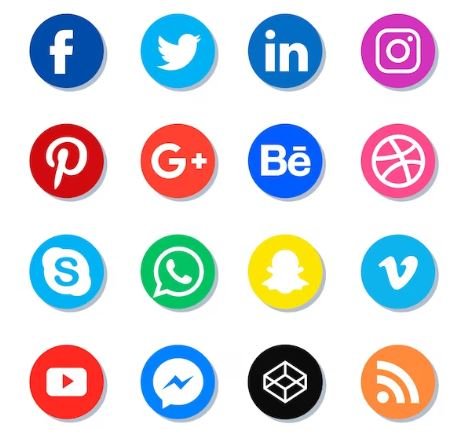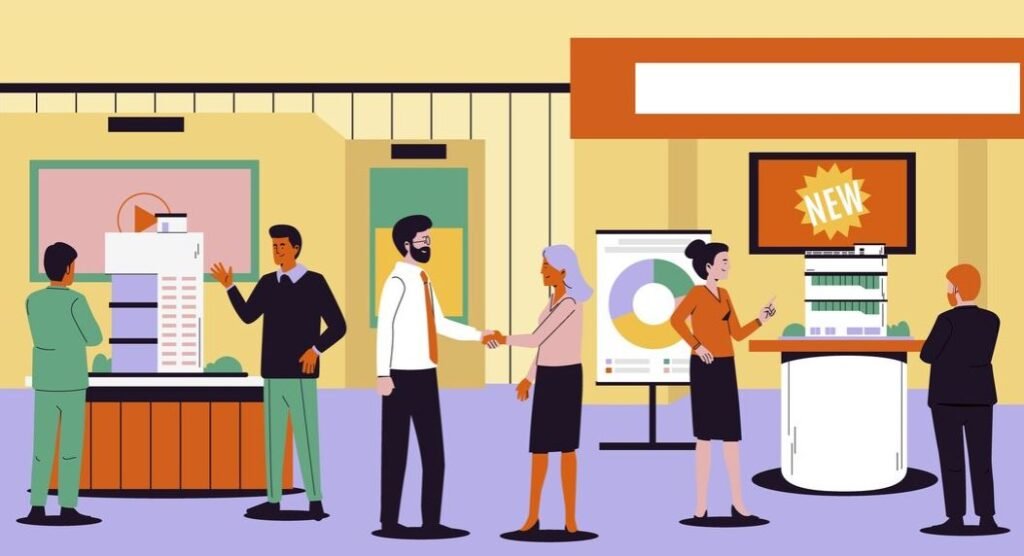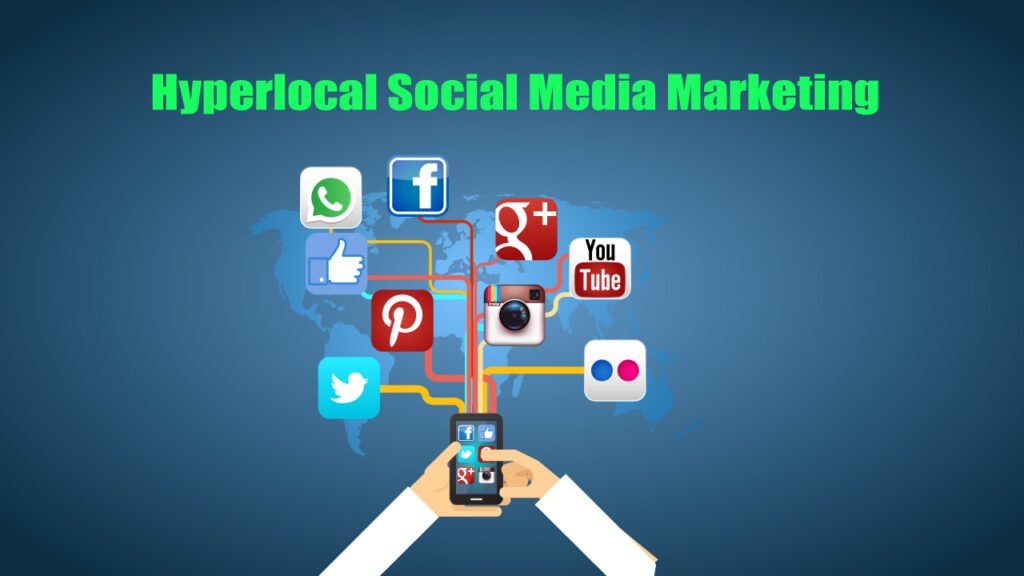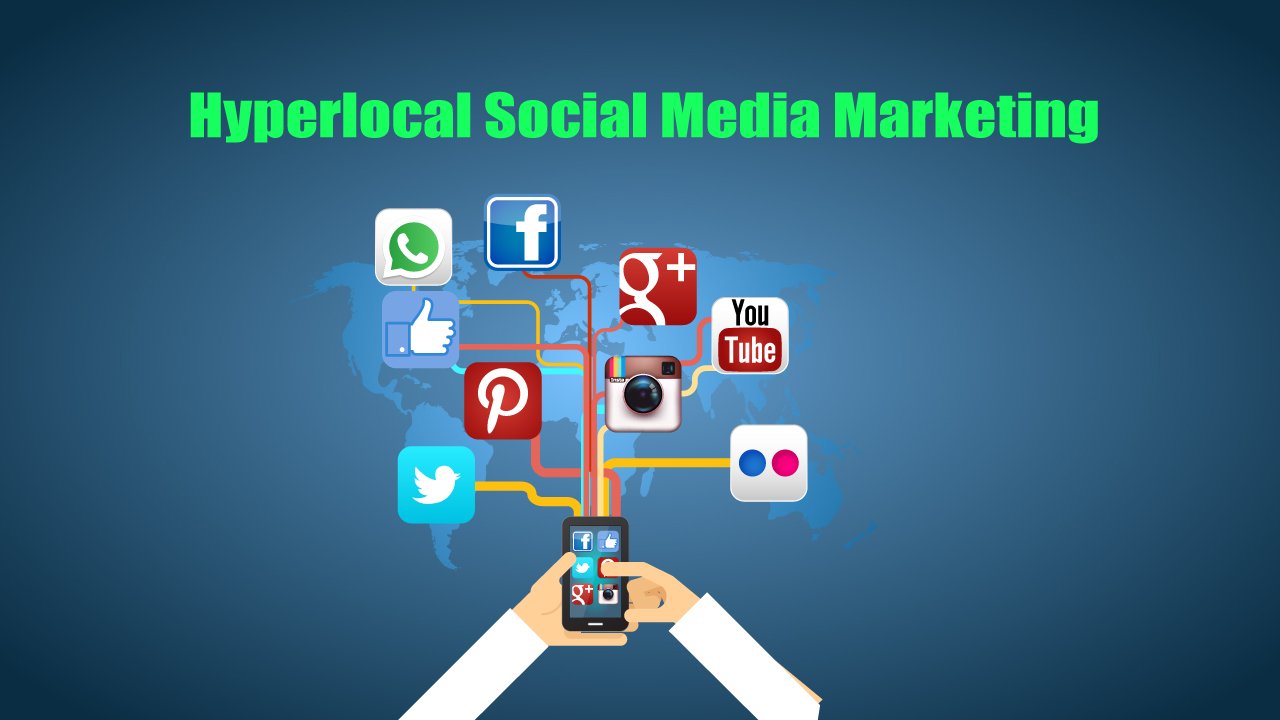Introduction
In today’s digital age, businesses are increasingly focusing on reaching their local audiences through hyperlocal social media marketing. This strategy allows them to connect with potential customers in their immediate vicinity, building strong community ties and driving foot traffic to physical stores. In this guide, we’ll explore what hyperlocal social media marketing is, why it’s essential, and how you can use it to boost your business.
What is Hyperlocal Social Media Marketing?
Hyperlocal social media marketing is a targeted approach that concentrates on engaging with a specific local audience. It’s all about bringing your online presence into the real world, creating a stronger sense of community, and fostering relationships with customers in your local area. Whether you run a local coffee shop, a boutique store, or a neighborhood service, hyperlocal marketing is the key to success.

Hyperlocal social media marketing is a type of digital marketing that focuses on targeting a specific geographic area, such as a neighborhood, city, or region. This strategy is especially popular among small businesses and local service providers who want to reach potential customers in their immediate area.
Hyperlocal social media marketing can be an effective way to:
- Increase brand awareness
- Generate leads and sales
- Drive foot traffic to your business
- Build relationships with local customers
- Establish yourself as a thought leader in your industry
This blog post will provide insights and strategies to help you excel in hyperlocal social media marketing. You will learn how to:
- Identify and target your local audience
- Create content that is relevant and engaging to your local community
- Use social media advertising to reach more people in your area
- Partner with local influencers to promote your business
- Track and measure your results
Whether you are just starting out with hyperlocal social media marketing or you are looking to take your strategy to the next level, this blog post is a valuable resource.
Here are some specific insights and strategies that you will learn in the blog post:
- How to use location targeting and geotags to reach people in your local area
- How to create social media content that is relevant and engaging to your local community
- How to use social media advertising to target your local audience with specific offers and promotions
- How to partner with local influencers to promote your business to their followers
- How to track and measure your hyperlocal social media marketing results
Traditional social media marketing in several key ways:
- Target audience: Hyperlocal social media marketing focuses on targeting a specific geographic area, such as a neighborhood, city, or region. Traditional social media marketing, on the other hand, aims for a broader reach and can target audiences based on demographics, interests, and other factors.
- Content: Hyperlocal social media marketing content is typically more specific and relevant to the local community. Traditional social media marketing content can be more general and targeted to a broader audience.
- Advertising: Hyperlocal social media marketing advertising allows businesses to target their ads to people in a specific geographic area. Traditional social media marketing advertising typically targets audiences based on demographics, interests, and other factors.
- Community engagement: Hyperlocal social media marketing is often more focused on building relationships with local customers and establishing a presence in the local community. Traditional social media marketing can also be used to engage with customers, but it is not as focused on building a local community.
Here is a table that summarizes the key differences between hyperlocal social media marketing and traditional social media marketing:
| Feature | Hyperlocal Social Media Marketing | Traditional Social Media Marketing |
|---|---|---|
| Target audience | Specific geographic area | Broader audience |
| Content | Specific and relevant to the local community | More general and targeted to a broader audience |
| Advertising | Can target ads to people in a specific geographic area | Typically targets audiences based on demographics, interests, and other factors |
| Community engagement | More focused on building relationships with local customers and establishing a presence in the local community | Can also be used to engage with customers, but is not as focused on building a local community |
Overall, hyperlocal social media marketing is a more targeted and community-focused approach to social media marketing. It is ideal for businesses that want to reach potential customers in their local area and build relationships with them.
The Power of Local SEO and Keywords
Local Search Engine Optimization (SEO) is the cornerstone of hyperlocal social media marketing. To be found by your local audience, you need to optimize your online presence with local keywords. For instance, “hyperlocal social media marketing” is a keyword you should naturally incorporate into your content and meta descriptions. When potential customers search for local businesses like yours, they should find you at the top of search engine results.
Here are some tips for keyword research and implementation:
Keyword research
- Start with a list of seed keywords. This is a list of broad keywords that are relevant to your business or industry. You can come up with seed keywords by brainstorming, looking at your competitor’s websites, and using keyword research tools.
- Expand your keyword list using related keywords and long-tail keywords. Related keywords are similar to your seed keywords, but they may be more specific or have a different connotation. Long-tail keywords are more specific and less competitive than seed keywords.
- Use keyword research tools to get insights into search volume, keyword difficulty, and other metrics. This information can help you choose the right keywords to target.
Keyword implementation
- Use your keywords throughout your website content, including in the title, meta descriptions, headings, and body text. However, avoid keyword stuffing, which is the practice of overusing keywords in your content to try to game the search engine rankings.
- Create targeted landing pages for your most important keywords. Landing pages are designed to convert visitors into customers or leads. They should be focused on a single keyword and should be optimized for search engines.
- Use your keywords in your social media posts and other marketing materials. This will help you reach more people who are interested in the topics that you cover.
Here are some additional tips for keyword implementation:
- Use synonyms and related keywords. This will help you reach a wider audience and avoid keyword stuffing.
- Use keywords naturally in your content. Don’t force them into your writing.
- Update your keywords regularly. Search trends change over time, so it’s important to keep your keywords up-to-date.
Leveraging Social Media Platforms
Social media platforms like Facebook, Instagram, Twitter, and Nextdoor are essential tools for hyperlocal marketing. Create compelling profiles for your business on these platforms, complete with accurate location information. Post relevant content, engage with your audience, and encourage user-generated content. This strategy will help you stand out and connect with your community effectively.

- Choose the right social media platforms. Not all social media platforms are created equal. Some platforms are better suited for certain businesses than others. For example, if you are a restaurant, you might want to focus on platforms like Instagram and TikTok, where you can share photos and videos of your food. If you are a service provider, you might want to focus on platforms like LinkedIn and Facebook, where you can share blog posts and articles about your industry.
- Use high-quality photos and videos. Visual content is more engaging than text-only content, so make sure to use high-quality photos and videos on your social media profiles. You can take your own photos and videos, or you can hire a professional photographer or videographer.
- Write a clear and concise bio. Your bio is your chance to tell potential customers about your business and why they should follow you. Make sure to include your business name, location, and what you do. You can also use your bio to highlight your unique selling proposition (USP) and what sets your business apart from the competition.
- Post regularly. The best way to keep your audience engaged is to post regularly. Aim to post at least once a day on each social media platform that you use.
- Interact with your audience. Social media is a two-way street. Don’t just post and then disappear. Respond to comments and questions from your followers. You can also use social media to run contests and giveaways, which is a great way to engage your audience and attract new followers.
- Use relevant hashtags. Hashtags are a great way to get your content seen by more people. When you post on social media, use relevant hashtags that people are likely to search for. You can also use hashtags to join conversations and participate in trending topics.
Here are some additional tips for creating a compelling social media profile for your local business:
- Be authentic. People can spot a fake from a mile away. Be yourself and let your personality shine through in your social media posts.
- Be helpful. Share valuable content that your audience will find informative and engaging. You can share blog posts, articles, videos, and other resources that are relevant to your industry.
- Be consistent. Use the same branding and tone of voice across all of your social media platforms. This will help you create a cohesive and professional online presence.
Content creation
- Create high-quality content that is relevant and engaging to your target audience. Your content should be informative, entertaining, or thought-provoking.
- Use a variety of content formats, such as blog posts, articles, images, videos, and infographics. This will help to keep your audience engaged and coming back for more.
- Optimize your content for search engines. Use relevant keywords throughout your content and make sure that your content is well-written and easy to read.
- Promote your content on social media and other online platforms. This will help to reach a wider audience and get more people to see your content.
Posting schedules
- Post regularly. The best way to keep your audience engaged is to post regularly. Aim to post at least once a day on each social media platform that you use.
- Schedule your posts in advance. This will help you to stay organized and consistent with your posting. You can use a social media management tool to schedule your posts in advance.
- Post at the right times. Different social media platforms have different peak times when users are most active. Try to post at the times when your audience is most likely to see your content.
- Analyze your results. Track your social media analytics to see which types of content and posting times are most effective. Use this information to refine your content strategy and posting schedule over time.
Here are some additional tips for creating a content calendar and posting schedule:
- Start by brainstorming a list of topics that you want to cover in your content. This could include industry news, product updates, tips and advice, and behind-the-scenes content.
- Once you have a list of topics, you can start to assign them to specific dates and times. Be sure to factor in your target audience’s timezone and when they are most likely to be online.
- Don’t forget to schedule time for social media promotion and community engagement. This includes responding to comments and questions, and participating in relevant conversations.
- Review your content calendar and posting schedule regularly. This will help you to stay on track and make adjustments as needed.
Engaging the Social Media Marketing Community
Engaging with your hyperlocal community is at the core of successful hyperlocal social media marketing. It’s not just about promoting your business; it’s about becoming a valuable and active member of your local community. Here are some strategies to foster stronger connections with your local audience:
1. Encourage User-Generated Content
Encourage your customers to share their experiences with your products or services on social media. User-generated content (UGC) not only acts as social proof but also helps spread the word about your business within the local community. Repost and acknowledge UGC to show appreciation for your loyal customers.

2. Participate in Local Events
Participating in local events, fairs, and festivals is an excellent way to connect with the community. Set up a booth or sponsor a local event to increase your visibility. Engaging with attendees and creating memorable experiences can leave a lasting impression.

3. Collaborate with Nearby Businesses
Collaboration with other local businesses can be mutually beneficial. Partner with neighboring businesses to cross-promote each other. This can include joint marketing efforts, hosting events together, or offering discounts for each other’s customers.

4. Address Local Concerns
Be an active listener on social media and respond to local concerns or issues. Address questions and provide solutions promptly. By showing that you genuinely care about your community, you can build trust and goodwill.
5. Share Local Stories and News
Stay updated on local news and share relevant stories on your social media channels. This helps you stay connected with current events and positions your business as an integral part of the community.
6. Support Local Causes
Support local charities or causes. Whether it’s a community cleanup, a charity run, or a fundraiser, involvement in such events not only benefits a good cause but also showcases your commitment to the community.

Data-Driven Decision Making
Data-driven decision making in hyperlocal social marketing is the process of using data to inform and improve your social media marketing campaigns for your local business. It involves collecting, analyzing, and interpreting data to identify patterns, trends, and insights that can be used to make better decisions about your social media marketing strategy.
Data-driven decision making is important in hyperlocal social marketing because it can help you to:
- Target your audience more effectively. By understanding your audience’s demographics, interests, and behaviors, you can create social media content and campaigns that are more likely to resonate with them.
- Create more engaging content. By tracking your social media analytics, you can see what types of content your audience is most interested in and engaging with. You can then use this information to create more engaging content in the future.
- Optimize your campaigns. By tracking the performance of your social media campaigns, you can identify what’s working and what’s not. You can then make adjustments to your campaigns to improve their performance.
- Measure the ROI of your social media marketing. By tracking the conversions and sales generated from your social media campaigns, you can measure the return on investment (ROI) of your social media marketing efforts. This information can help you to make decisions about how to allocate your marketing budget.
Here are some specific ways to use data-driven decision making in hyperlocal social marketing:
- Use social media analytics to identify your most engaged followers. Once you know who your most engaged followers are, you can target them with special offers, promotions, and content that is likely to be of interest to them.
- Use Google Analytics to track traffic from your social media campaigns to your website. This information can help you to see which social media platforms are driving the most traffic to your website. You can then focus your social media marketing efforts on those platforms.
- Use social media listening tools to track mentions of your brand on social media. This information can help you to identify what people are saying about your brand and to respond to any negative feedback.
- Use surveys and polls to collect feedback from your followers. This feedback can help you to better understand your audience’s needs and preferences. You can then use this information to improve your social media content and campaigns.
By using data-driven decision making in your hyperlocal social marketing campaigns, you can make more informed decisions about your social media marketing strategy. This can help you to reach more people, generate more leads, and increase sales.
Here are some additional tips for using data-driven decision making in hyperlocal social marketing:
- Set clear goals and objectives for your social media marketing campaigns. This will help you to identify the data that you need to collect and track.
- Use a variety of data sources. Don’t just rely on data from one source. Use data from multiple sources to get a more complete picture of your social media marketing performance.
- Be patient and persistent. It takes time to collect and analyze data. Don’t expect to see results overnight.
- Be flexible and adaptable. Things change quickly in the world of social media. Be prepared to adjust your social media marketing strategy based on your data analysis.
By following these tips, you can use data-driven decision making to improve your hyperlocal social marketing campaigns and achieve your business goals.
Case Studies and Success Stories
Here are some case studies and success stories of businesses that have used hyperlocal social marketing to achieve their goals:
Case Study #1: Local Restaurant
A local restaurant in a small town was struggling to attract new customers. They decided to try hyperlocal social marketing to reach more people in their community.
The restaurant started by creating a social media presence on Facebook, Instagram, and Twitter. They posted regularly about their food, menu updates, and special promotions. They also used social media to run contests and giveaways.
The restaurant also partnered with other local businesses to cross-promote each other’s products and services. For example, they partnered with a local brewery to host a beer tasting event.
As a result of their hyperlocal social marketing efforts, the restaurant was able to increase brand awareness, generate leads, and increase sales. They also built strong relationships with other local businesses in their community.
Case Study #2: Local Clothing Store
A local clothing store in a big city was facing competition from larger retail chains. They decided to use hyperlocal social marketing to differentiate themselves from the competition.
The clothing store started by creating a social media presence on Instagram and TikTok. They posted regularly about their latest fashion trends, new arrivals, and styling tips. They also used social media to run contests and giveaways.
The clothing store also partnered with local fashion influencers to promote their brand. They sent influencers free clothes to wear and post about on social media.
As a result of their hyperlocal social marketing efforts, the clothing store was able to increase brand awareness, generate leads, and increase sales. They also built a loyal customer base of people who were interested in fashion and style.
Success Story #1: Home Improvement Company
A home improvement company in a suburban area was looking to generate more leads and sales. They decided to try hyperlocal social marketing to reach more potential customers in their community.
The home improvement company started by creating a social media presence on Facebook and Nextdoor. They posted regularly about their services, special offers, and customer testimonials. They also used social media to run contests and giveaways.
The home improvement company also partnered with local real estate agents to promote each other’s products and services. For example, they co-hosted a home buying seminar.
As a result of their hyperlocal social marketing efforts, the home improvement company was able to generate more leads and sales. They also built strong relationships with other local businesses in their community.
Success Story #2: Fitness Studio
A fitness studio in a downtown area was looking to attract more members. They decided to use hyperlocal social marketing to reach more potential customers in their community.
The fitness studio started by creating a social media presence on Instagram and TikTok. They posted regularly about their workout classes, fitness tips, and client transformations. They also used social media to run contests and giveaways.
The fitness studio also partnered with local health and wellness businesses to promote each other’s products and services. For example, they co-hosted a healthy eating workshop.
As a result of their hyperlocal social marketing efforts, the fitness studio was able to attract more members. They also built a loyal community of people who were interested in fitness and health.
These are just a few examples of how businesses have used hyperlocal social marketing to achieve their goals. By focusing on their local community and using social media to connect with potential customers, businesses can use hyperlocal social marketing to increase brand awareness, generate leads, increase sales, and build strong relationships with their customers.
Common Mistakes to Avoid
Here are some common mistakes to avoid when using hyperlocal social marketing:
- Not having a clear goal or strategy. Before you start any marketing campaign, it’s important to have a clear goal and strategy in mind. What do you want to achieve with your hyperlocal social marketing campaign? Once you know your goal, you can develop a strategy to achieve it.
- Not targeting your audience effectively. Hyperlocal social marketing is all about targeting your local audience. Make sure you’re using the right social media platforms and targeting your ads to the right people.
- Not creating engaging content. Your social media content should be engaging and relevant to your local audience. Share interesting and informative content, and use high-quality visuals.
- Not being consistent. It’s important to post regularly on social media in order to reach your audience and keep them engaged. Aim to post at least once a day on each social media platform that you use.
- Not interacting with your audience. Social media is a two-way street. Make sure you’re responding to comments and questions from your audience. You can also use social media to run contests and giveaways, which is a great way to engage your audience and attract new followers.
- Not tracking your results. It’s important to track your social media results so that you can see what’s working and what’s not. This information will help you to improve your hyperlocal social marketing strategy over time.
Conclusion
Hyperlocal social marketing is a powerful tool that businesses can use to connect with their local community and achieve their marketing goals. By focusing on their local audience and using social media to share relevant content and engage with potential customers, businesses can use hyperlocal social marketing to increase brand awareness, generate leads, increase sales, and build strong relationships with their customers.
Collect books to learn more and become proficient.





